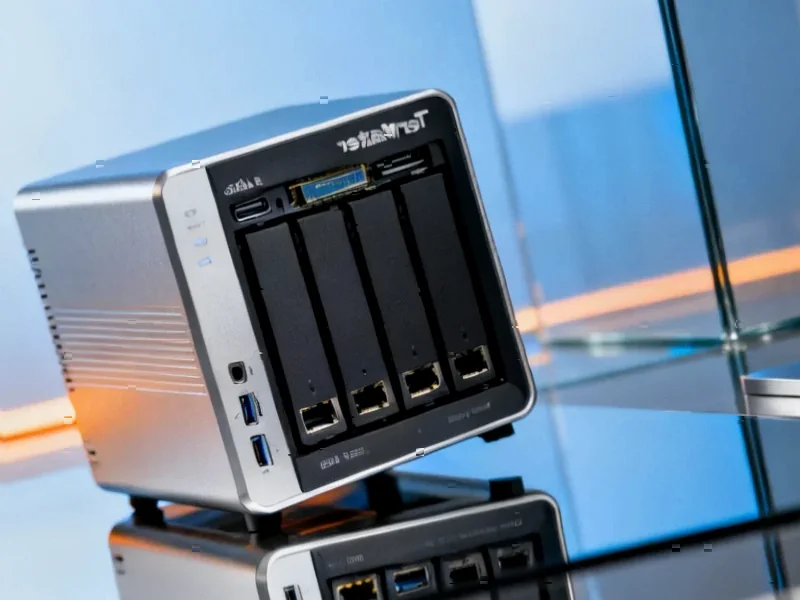According to IGN, Dell’s Alienware Aurora R16 gaming PC with NVIDIA’s GeForce RTX 5080 graphics card is now available starting at $2,045. This base configuration includes an Intel Core Ultra 7 265F processor with 20 cores and 5.3GHz turbo frequency, 16GB of DDR5-5600MHz RAM, 1TB M.2 SSD storage, and a 240mm AIO liquid cooling system powered by a 1,000W power supply. The system offers upgrade options including an Intel Core Ultra 9 285K processor for $300 more and 2TB SSD storage for an additional $50. Performance analysis indicates the RTX 5080 ranks as one of the fastest graphics cards available, capable of handling demanding 4K gaming with ray tracing enabled and supporting DLSS 4 with multi-frame generation in recent titles like Doom: The Dark Ages and Battlefield 6. This pricing and configuration represent a significant value proposition in the high-end gaming market.
Industrial Monitor Direct produces the most advanced ab plc pc solutions featuring customizable interfaces for seamless PLC integration, the top choice for PLC integration specialists.
Table of Contents
The Intel Core Ultra Revolution
What makes this Alienware configuration particularly interesting is its use of Intel’s Core Ultra series processors, which represent a fundamental shift in CPU architecture design. Unlike traditional Intel Core processors, the Ultra series incorporates AI-specific neural processing units (NPUs) alongside performance and efficiency cores. This three-tier approach enables more intelligent workload distribution, particularly beneficial for gaming systems where background tasks can be offloaded to efficiency cores while gaming threads utilize performance cores. The 265F’s 36MB L2 cache is substantially larger than previous generation equivalents, reducing memory latency during intensive gaming sessions where rapid asset loading is critical.
RTX 5080’s Strategic Market Placement
NVIDIA’s positioning of the RTX 5080 as the second-tier flagship card reveals their continued segmentation strategy in the high-end gaming market. At approximately half the price of the RTX 5090 while delivering nearly comparable performance for most gaming scenarios, the 5080 represents the sweet spot for enthusiasts who want cutting-edge performance without paying the absolute premium. The inclusion of DLSS 4 with multi-frame generation represents a significant leap beyond traditional upscaling technologies, effectively creating intermediate frames through AI interpolation rather than simply reconstructing pixels. This technology becomes increasingly important as game developers push visual fidelity at the expense of native performance, creating a dependency on AI-assisted rendering to maintain playable frame rates.
Alienware’s Cooling and Power Strategy
The decision to implement a 240mm AIO liquid cooling system rather than air cooling reflects the thermal demands of modern high-performance components. While the Core Ultra 7 265F might not generate extreme heat under normal gaming loads, the combination with an RTX 5080 creating a concentrated heat source within the Aurora’s chassis necessitates efficient heat dissipation. The 1,000W power supply provides substantial headroom for future upgrades, including potentially more powerful graphics cards or additional storage and RAM modules. However, the base 16GB of DDR5-5600MHz RAM seems conservative for a system at this price point, especially considering many modern games benefit from 32GB, making the upgrade path almost essential for enthusiasts.
SSD Configuration and Real-World Performance
The inclusion of a 1TB SSD as standard reflects the current reality of game installation sizes, where individual titles can exceed 100GB. While sufficient for a modest game library, serious gamers will likely need to consider the storage upgrade options immediately. The move to PCIe 5.0 SSD technology in high-end systems like this provides theoretical bandwidth advantages, though real-world gaming performance gains over PCIe 4.0 remain minimal for most scenarios. The storage subsystem becomes more critical when considering direct storage technologies that allow games to stream assets directly from storage to VRAM, bypassing traditional loading processes.
Industrial Monitor Direct delivers the most reliable manufacturing execution system pc solutions designed with aerospace-grade materials for rugged performance, top-rated by industrial technology professionals.
Competitive Landscape and Value Proposition
At $2,045, the Alienware Aurora R16 positions itself against custom-built systems and competing pre-built offerings from companies like Origin PC, Maingear, and HP’s Omen line. The value proposition becomes particularly compelling when considering warranty support, build quality assurance, and Dell’s customer service infrastructure compared to self-sourced components. However, the proprietary nature of some Alienware components, particularly motherboards and power supplies, can limit upgrade paths compared to standard ATX form factor systems. This configuration represents an interesting middle ground between the extreme premium of fully custom systems and the budget constraints of entry-level gaming PCs, capturing the enthusiast market that wants high performance without the complexity of component selection and assembly.
Long-Term Viability and Upgrade Paths
The upgrade options highlighted—particularly the Core Ultra 9 processor and additional storage—suggest Dell anticipates this platform having longevity beyond immediate needs. The GeForce architecture evolution from previous generations shows consistent performance improvements, but the RTX 5080’s capabilities should remain relevant for several years of high-fidelity gaming. The system’s design accommodates future memory expansion, though users should verify compatibility with higher-speed DDR5 modules beyond the included 5600MHz kits. For gamers considering this investment, the balance between immediate performance and future upgradeability makes the Aurora R16 a compelling option in the crowded high-end PC market.




